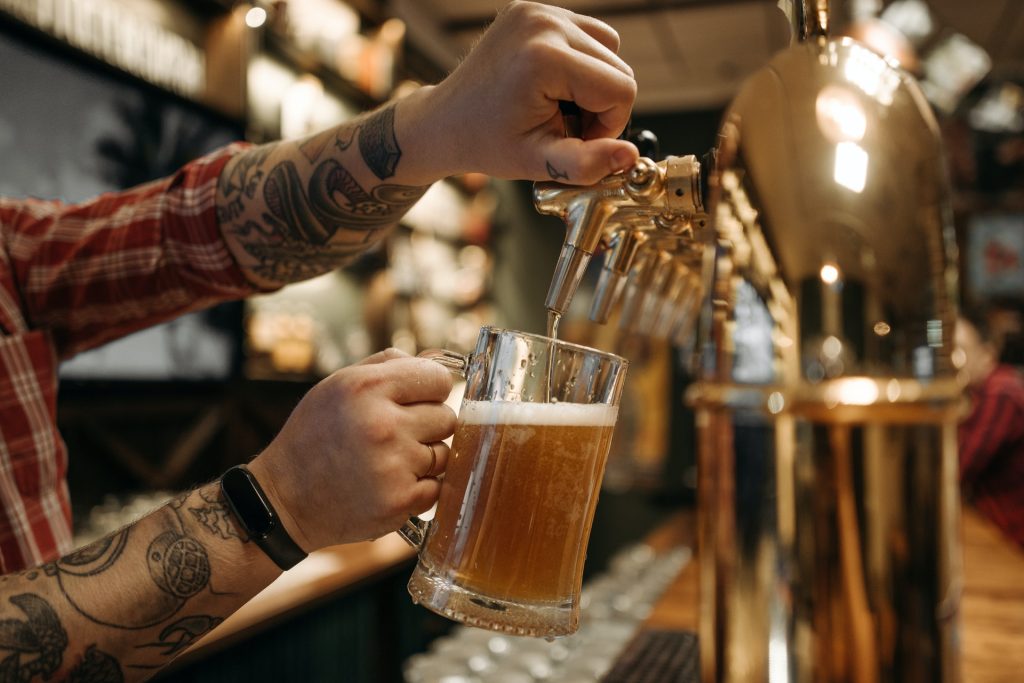
An analysis of seven international research studies found that, even in adults without hypertension, blood pressure (BP) readings may climb more steeply over the years as the number of daily alcoholic drinks rise. The findings, published in the journal Hypertension, also found no beneficial effects to a low level of alcohol intake.
Pooling seven international research studies, this analysis confirms for the first time a continuous increase in blood pressure measures in both participants with low and high alcohol intake. Even low levels of alcohol consumption were associated with detectable increases in blood pressure levels that may lead to a higher risk of cardiovascular events.
“We found no beneficial effects in adults who drank a low level of alcohol compared to those who did not drink alcohol,” said senior study author Marco Vinceti, MD, PhD, a professor of epidemiology and public health at the University of Modena and Reggio Emilia University and an adjunct professor at Boston University’s School of Public Health. “We were somewhat surprised to see that consuming an already-low level of alcohol was also linked to higher blood pressure changes over time compared to no consumption – although far less than the blood pressure increase seen in heavy drinkers.”
“Our analysis was based on grams of alcohol consumed and not just on the number of drinks to avoid the bias that might arise from the different amount of alcohol contained in ‘standard drinks’ across countries and/or types of beverages,” said study co-author Tommaso Filippini, MD, PhD, an associate professor of epidemiology and public health in the Medical School of the University of Modena and Reggio Emilia in Italy, and affiliate researcher at the University of California Berkeley School of Public Health.
Researchers reviewed the health data for all participants across the seven studies for more than five years. They compared adults who drank alcohol regularly with non-drinkers and found:
- Systolic BP rose 1.25mmHg in people who consumed an average of 12 grams of alcohol per day, rising to 4.9mmHg in people consuming an average of 48 grams of alcohol per day.
- Diastolic BP rose 1.14mmHg in people consuming an average of 12 grams of alcohol per day, rising to 3.1mmHg in people consuming an average of 48 grams of alcohol per day. These associations were seen in males but not in females. Diastolic blood pressure measures the force against artery walls between heartbeats and is not as strong a predictor of heart disease risk in comparison to systolic.
“Alcohol is certainly not the sole driver of increases in blood pressure; however, our findings confirm it contributes in a meaningful way. Limiting alcohol intake is advised, and avoiding it is even better,” Vinceti said.
Although none of the participants had high blood pressure when they enrolled in the studies, their blood pressure measurements at the beginning did have an impact on the alcohol findings.
”We found participants with higher starting blood pressure readings, had a stronger link between alcohol intake and blood pressure changes over time. This suggests that people with a trend towards increased (although still not ‘high’) blood pressure may benefit the most from low to no alcohol consumption,” said study co-author Paul K. Whelton, MD, MSc, at Tulane University’s School of Public Health.
Study details and background:
- Researchers analysed data from seven, large, observational studies involving 19 548 adults (65% men), ranging in age from 20 to their early 70s at the start of the studies.
- The studies were conducted in the United States, Korea and Japan, and published between 1997 and 2021. None of the participants had previously been diagnosed with high blood pressure or other cardiovascular diseases, diabetes, liver disease, alcoholism or binge drinking.
- Usual alcoholic beverage intake was recorded at the beginning of each study and the researchers translated this information into a usual number of grams of alcohol consumed daily. The researchers used a new statistical technique that allowed them to combine results from several studies and plot a curve showing the impact of any amount of alcohol typically consumed on changes in blood pressure over time.
Other co-authors and authors’ disclosures are listed in the manuscript.
Source: American Heart Association

